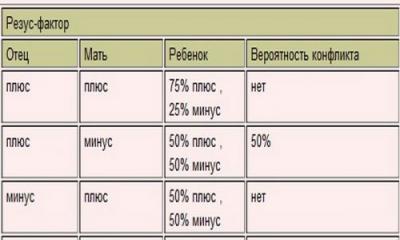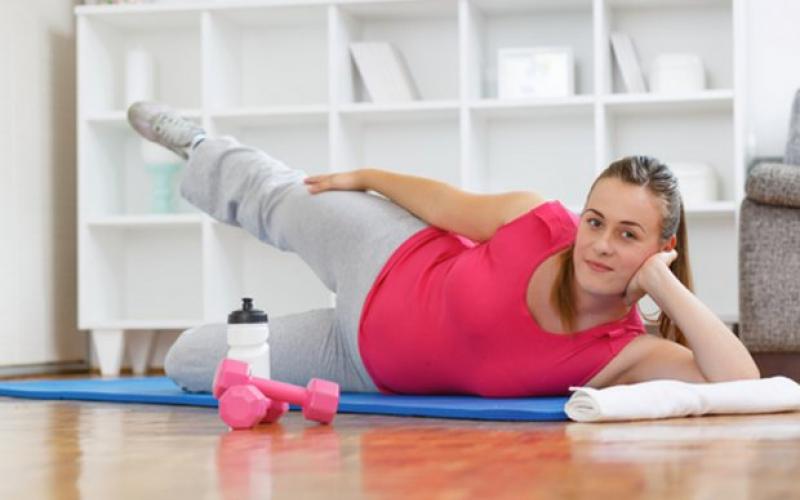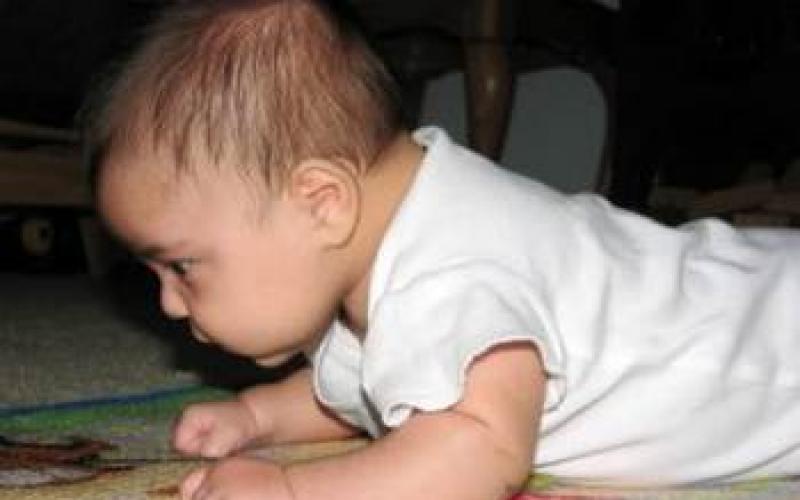It is difficult to imagine a person who is indifferent to special functional things. They always attract attention, you want to buy them or make them yourself. Take, for example, a blanket: thanks to the close attention of designers, such a product is both a stylish accent of the room and functional. Knitted blankets are unique, in terms of their properties and performance characteristics they are not inferior to textile counterparts, having a number of advantages.
Features:
Knitted blankets are special types of blankets. Their main difference from the usual blankets is the manufacturing method: these products are knitted fabric. In most cases, these models are made of hypoallergenic material that does not irritate the skin. This is important for allergy sufferers and users with particularly sensitive dermis that redden from any contact with the yarn. In production, they use soft, pleasant to the body threads that do not have prickly inclusions.

Knitted blankets have a number of features. They:
- are made from raw materials of natural or synthetic origin, as well as their compositions (mixed threads);
- are carried out in bulk on professional equipment or are made by hand (for yourself and to order);
- have excellent elasticity and the ability to stretch, covering any type of surface without folds (important for cover models);
- depending on the type of yarn, they differ in thickness and relief (can be flat or voluminous);
- have no restrictions in the choice of pattern and flight of imagination;
- can be one-sided, double-sided, have a textile, fur base, or be exclusively knitted product (depends on the model and imagination of the author);
- based on the characteristics of the pattern and size, the amount of yarn spent has different weights;




- have not only the usual rectangular shape: they can be round, square, oval, hexagonal and unusual (in the form of animal skins, insects, envelopes);
- differ in the complexity and variety of the pattern, allowing you to choose the option that interests you most;
- are made for different bed (sofa) sizes, taking into account different age group (for children, adolescents and adults);
- have the richest color palette, due to which they are an unobtrusive accent of any room and are able to visually change the space of the room in the right direction;
- are made in a monochromatic or contrasting version, which is convenient for the color composition of interior items;
- depending on the cost of the raw materials used, they differ in different costs, allowing the buyer to choose the most acceptable option, taking into account their taste and wallet.




Knitted blankets are unusual: you cannot find them in every home. This is not a widescreen extras, which is why they are popular. And when you consider the creative approach with which the craftswomen make such products, the results can often be called masterpieces of design art.
Often homemade blankets are decorated with fittings (buttons, lace, fringe, cord, pom-poms, embroidery).


Functionality
Knitted blankets are not just pretty capes. They are multifunctional. Along with the decorative function and the ability to bring fresh colors into the familiar design of the room, they:
- give a complete and neat look to the sleeping place (on the bed, sofa);
- able to become a temporary cover for any upholstered furniture (sofa, armchair, modular design);
- can be used as a light blanket-blanket (actual in summer and off-season);
- in products for infants, they are perfectly transformed into stylish envelopes, convenient for going out for a walk or in a children's clinic;
- depending on the volume, the canvases can become warm and soft rugpositioned on top of the crib mattress or on the floor on top of the carpet (to keep the baby warm and hygienic);
- successfully replace a warm sweater or overalls, carefully enveloping the user who is sitting at the TV screen (actually in a cold room);
- depending on the composition of the material used, they have healing properties (with regards to models made of sheep and camel wool);
- create a cozy and welcoming atmosphere in the room.

Minuses
Alas, best models from wool are not suitable for everyone: despite the uniqueness of the threads and the best qualities of this material, some users have intolerance to it. Despite the many advantages, knitted blankets have several more disadvantages:
- in most cases, they cannot be put on the mattress to vary the degree of softness (pressure on any knitting relief will leave "prints" of the pattern on the body, which is harmful to blood flow);
- knitted blankets require a large amount of yarn in large sizes and a lot of time to make (at home);
- almost always problematic to care for and not resistant to machine washing (they need hand wash, delicate spinning, proper drying away from sunlight);
- dry after washing longer than textile analogues, requiring a large vertical surface (when drying in the usual way, they stretch, deforming the pattern and reducing the width of the canvas);
- susceptible to dust accumulation, which creates a habitat for allergic dust mites.

Types
Thanks to a creative approach, a knitted blanket can be of a special shape (with a hood, ears, buttons for transformation). By the type of manufacture, such a product can be made:
- By hand using knitting needles or crochet;
- Machine way on a knitting machine or production equipment.


The difference between the method of execution is visible immediately: the machine type often means working with yarn of a smaller thickness, using the maximum number of loops, an abundance of patterns and weaves. Such a product is created faster than an analogue by hand, but it requires an accurate count of the number of loops.


Blankets knitted on a production machine are always neat and uniform. Well-established technology allows knitting of any complexity and pattern, however, it is always limited to batch options.
Hand knitting is different in appearance: while the fabric is knitting, the degree of density of the loops may vary. It is rarely as perfect as a machine, but after washing, as a rule, the fabric looks more or less uniform. Manual labor is not limited by any technology, therefore, it allows to realize any fantasy of the author, demonstrating the texture and pattern in the best possible light. In addition, it is easier to make composite fragments by hand if the plaid model requires it.




Techniques and patterns
The methods of making a knitted blanket are different. In production, such products are knitted by machine in a standard knit. Handcrafting at home is divided into four techniques:
- knitting in a straight line (from edge to edge with the transition to the next row);
- in a circle (starting from the chain, adding loops at the corners with each new row);
- diagonally (oblique knitting technique);
- by the method of creating and assembling individual fragments (from squares).




Each technology is individual, however, before manufacturing the product, the knitting density (necessary for calculating the loops) and the description of the pattern are always taken into account.
Depending on the type of yarn, the blanket can be large or fine knit, made with or without a volumetric pattern, with a pattern created by means of different colors of threads in the form. The product can be made from:
- contrasting stripes;
- geometric shapes;
- norwegian ornaments;
- ethnic motives;
- new Year's themes;
- funny animals;
- african motives;
- characters from children's cartoons.

One of the interesting techniques for making a blanket at home is assembling a model from old sweaters. In this case, small canvases cut into squares are used. The assembly technique for such a blanket requires sewing machine and in general resembles working with patches in the Patchwork force. Knitted fragments of the same length and width are sewn together, processing the edges on an overlock (so that they do not spill out). To make the plaid "marketable", from the seamy side it is covered with a lining of fabric or fur.

As for the patterns, they can be anything - from simple garter stitch, to voluminous compositions.
All kinds of braids, plaits, weaves, combinations of stripes from alternating front and back loops are especially popular decorations for knitted blankets.


Most interesting options plaid can be created:
- tunisian knitting - "Afghani" crochet technique, in which the pattern is formed on the basis of a two-level row pattern;
- bavarian knitting - crocheting in a circle with the compilation of fragments or a whole fabric in the form of a square;
- in the Scandinavian way - knitting two-color jacquard patterns Norwegian-themed garter knitting with knitting needles;
- double-sided knitting - at the same time with two threads on the needles or one crochet.
The uniqueness of knitting may lie in fragmentation: the canvas can be solid, but with different patterns, which is emphasized by the contrasting color of the yarn and another pattern.



Materials
The yarn for blankets can be absolutely any, but without the addition of a metallized thread, which, although shiny, spoils the texture of the canvas and pricks the skin. Often, to make such a bedspread, craftswomen use yarn leftovers, creating colorful colors. In other cases, they buy extra thick yarn for hand knitting, which allows you to create a unique plaid scarf in a short time. The most demanded raw materials used for knitted blankets are:
- cotton;
- acrylic;
- wool (Australian merino);
- wool mixture;
- "grass";
- a mixture of angora and acrylic;
- mohair;
- wool with acrylic.


Each type of material differs in its result: options "from grass", knitted, very soft, voluminous and pleasant to the body. Woolen and semi-woolen blankets, complemented by a textile base, are a worthy competitor to woven blankets.
Cotton models are lightweight, non-irritating and easy to clean.

Colors
The color palette of knitted blankets is multifaceted. Manufacturers offer a variety of options that can satisfy the most demanding preferences. More often, the lines consist of dark and practical tones: dark gray, burgundy, mustard, brick, blue, brown. The light range includes classic colors: white and beige, as well as pastel shades (pink, lilac, green, mint, lemon).
Home-made knitted blankets are often made in practical and rich colors. The favorites of the color palette of the craftswomen are green, terracotta, orange, coral, crimson, mottled (multi-colored from two or three tones) color. Products for children are distinguished by their colorful cheerfulness. These are the most interesting and bright blankets that have no boundaries in the choice of color.




Dimensions
The dimensions of a knitted blanket depend on the shape of the bed (sofa) and are individual in each case. For children, this indicator can be 70x70, 80x100, 100x100, 70x125, 110x140 cm. Since such a product should cover not only the bed, but also the user, its size should be equal to the growth with a margin. Product dimensions for adults can be 130x170, 140x180, 150x180, 150x200, 160x200, 160x220, 180x200 cm.
Too voluminous blankets less convenient, especially if made by hand.




Styles
The uniqueness of knitted blankets lies in the fact that they fit into any style of the room - from Classic and Minimalism to Glamor and Empire. Typically, the basis of the idea depends on the pattern or color. A knitted blanket fits the style most successfully:
- Country;
- Provence;
- Vanguard;
- Art Nouveau;
- African;
- Baroque;
- Boho;
- Loft;
- Art Deco;
- Arab.
The type of room does not matter: the blanket is relevant in the bedroom, living room, hall, kitchen and even a children's room, a spacious loggia, a veranda (decoration of a country house).

How to choose?
When buying a knitted blanket in a store, it is worth considering a number of nuances:
- availability of a certificate of quality and compliance with hygiene standards;
- availability of information on the composition of the material, manufacturer, indicating the legal address and rules for caring for the blanket;
- product heat index;
- the presence of positive reviews about a particular store and the seller's guarantee;
- correspondence of cost and quality (you can preview analogs and compare prices).
In order for the product to successfully fit into the type and design of the room, you cannot do without the selection of a shade. If special functionality is planned (plaid-cocoon with a hood, plaid-envelope), “fitting” is desirable.




By ordering manual work, it is worth discussing the design, knitting density, relief thickness and exact size. It is worth paying attention to quality: an overly loose product is impractical: it is prone to mechanical damage, abrasion, and stretching of the loops. You can take note of a couple of tips:
- options for winter (wool blankets) are better to choose with a textile lining: they are warmer, and due to the woven base they preserve the knitted fabric;
- an openwork handmade blanket is less practical than a 3D analog of a thin embossed knitting made on a knitting machine;
- products made from fragments have a less strong connection, therefore, they require more careful handling;
- products with a large pattern knit faster, but are more airy, therefore they retain less heat (not suitable as blankets);
- woolen things have "dry" heat and lanolin, so if a therapeutic effect is needed, there is no better choice (antimicrobial and anti-inflammatory effect, prevention of colds);
- the product for a child should be functional, beautiful, but safe, various flat drawings in the form of hearts, daisies, bears, hares with voluminous ears and other subjects are acceptable, but ties, loops, hooks that can injure a baby are unacceptable;
- the thing should be beautiful and functional, made of high-quality yarn that does not contain toxic dyes.
What associations do you have on the phrase "winter evening"? .. Surely there will be - a table lamp, a cozy armchair, a cup of hot tea and a warm affectionate blanket. Yes, yes, the original was a plush blanket, but these are not very popular now. But knitted ones are consistently in trend - after all, on winter evenings they are so pleasant to knit and so cozy to hide with them.
And this useful item came to us from northern Scotland - a windy mountainous region. During the day, the highlanders - both men and women - wore it as outerwear, and at night they used it as a blanket. Scottish rugs were woven and dyed in bright colors.
But we owe knitted blankets ... to children. Woolen blankets in those years were rather rough, and in order not to damage delicate skin babies, blankets were knitted for them from the softest and most delicate yarn. These blankets were warm and light. it was possible to wrap the baby in them, and cover him.
Not surprisingly, the boom in hangmade products in the middle of the 20th century also revived the popularity of blankets, especially knitted blankets. It was in those years that many very popular models appeared - both knitted and crocheted, and later - made using the machine knitting technique.
Favorites, of course, blankets from "Afghan squares" crocheted... They are very simple to perform, but at the same time very effective - they are available to both completely novice craftswomen and pros. But the main thing is that they are very convenient in execution: first, squares are knitted, which are then assembled into a canvas. It remains only to tie a blanket around the perimeter - and the wonderful thing is ready!
And how many famous techniques they embody in themselves: the patchwork technique, and Irish lace, and knitting!
By the way, knitters use the same technique: first, the required number of motifs is knitted (they can be of different colors and with different patterns), and then they are assembled into a single canvas. Experienced craftswomen claim that this is a great way to "recycle" knitting samples or yarn residues. Moreover, when such different motives, colors and textures are collected in one product, the blankets turn out to be very interesting.
But even if you know how to knit only the most simple patterns - no problem. If you use yarn of different colors, you get truly fantastic things. Although, many, on the contrary, prefer plain blankets - they look very stylish and solid.
But in any case, a blanket is a very homely, cozy thing, carrying the warmth of the master and warming in the most severe cold. And about any of them we can say:
So cozy and warm.
Snow flies outside the window.
And in the shower it is completely light.
Coffee. Book. Warm blanket. ©
The size 1.5 x 15 m
You will need: yarn "Alpaca" (50% alpaca, 50% wool. 50 g / 185 m): 400 g each brown and ecru, 100 g blue; finishing yarn (50% wool, 50% acrylic, 50 g / 200 m): 50 g green color.
Weave
Kulirny smooth surface.
Knitting density: 30 p.x 41 p. \u003d 10 x 10 cm. Knitted with a stitch on a knitting machine "Silver Reed" at a density of 6.
Attention! The blanket is made of three parts that are joined together in the process of knitting on a knitting machine "Silver Reed" at a density of 6.
Knitting description
For the 1st part, use 150 needles (in the zone 75-0-75). Sew a set of loops with brown yarn with a pigtail (or carry out a set on a waste thread). Knit with crochet stitch. After knitting 6 rows from the beginning of work, * on the right side of the canvas, transfer the loop from the 4th needle to the 5th with a decker. Leave the released needle in operation. Knit 5 more rows * with stitching stitch. Repeat from * to * to the end of the part. On row 205, swap the brown yarn for ecru and knit 204 more rows. After 408 rows, change the yarn to brown and knit 204 more rows. After knitting 612 rows on the counter, remove the loops from the needles to the waste thread.
For the 2nd part, include 150 needles (in zone 75-0-75). Sew a set of loops with ecru yarn with a pigtail (or carry out a set on a waste thread). Knit with crochet stitch. After 6 rows (carriage on the right), begin to make holes on the right side of the canvas, as in the 1st part. At the same time, on the left side, start attaching the 1st part as follows: take the part with the wrong side towards you, the holes are on the right. Insert the three-needle decker into the first hole from the bottom, remove the 3 extreme left loops of the 2nd part from the needles, pull them through the first hole of the 1st part and put them on the needles again. Transfer the buttonhole from the 1st needle to the 5th. Knit 5 more rows with stitching stitch, then again make a hole on the right side, and on the left - join the parts. Change the yarn to blue after 204 rows. After another 204 rows, swap yarn for ecru. Continue making holes from the left side and connecting parts from the right to 612 rows. Remove the loops from the needles with a waste thread.
For the 3rd part, include 150 needles (in zone 75-0-75). Sew a set of loops with brown yarn with a pigtail (or carry out a set on a waste thread). Knit with crochet stitch, alternating the color of the yarn, as in the 1st part. Attach with the 2nd part on the left side as described above. After knitting 612 rows on the counter, remove the loops from the needles to the waste thread.
Assembly:
Steam off the blanket. Crochet the open loops and remove the loose thread. To trim the edge of the blanket with finishing yarn, cast on a pigtail 4 p. Carriage on the right. On the same needles, put on 4 inter-nodular bows of the blanket edge. Work 8 rows. * Put on the same needles the next 4 inter-nodular bows of the hem, knit 8 more rows *. Repeat from * to * around the entire perimeter of the blanket.
There is always so little time for needlework. Pictures of everything you want so much fly through your head. Sometimes such thoughts are that a lifetime is not enough to do all the beautiful things that are found on the Internet. That's enough, because knitting can be faster with special knitting machines.
It is enough to purchase good model with numerous functions and a punch card will do everything you dreamed of. A couple of models of amazing blankets, knitted by car.
 For a knitting machine, it is better to use special yarn for a knitting machine. For beginners and even experienced craftsmen, it is not always possible to guess the correct thread thickness.
For a knitting machine, it is better to use special yarn for a knitting machine. For beginners and even experienced craftsmen, it is not always possible to guess the correct thread thickness.
Plus the additional settings that the equipment will require on such threads are not exactly marked. But it's better not to disturb the master so often.
If you want a relaxed knitting - choose suitable yarns.
Sample
A pattern is also required for a blanket. Even baby blanket will not do without such a detail... All products must have their own clear size. Or you have to dissolve the whole product that the knitting machine so diligently performed.
Blanket for a child on a knitting machine
A bright and alive model of this blanket can be made practically by a robot. The product is very smooth, straight stitches, even patterns. Line to line, it's all more than perfect.
 For work you will need:
For work you will need:
- yarn for a knitting machine Dora threads of several colors (white 3 skeins, yellow 2 skeins and mint 1);
- knitting machine one-fable.
The threads contain acrylic. There is no wool in them, which can easily provoke allergies in a child. The plaid consists of three stripes, which are then simply sewn together.
First lane
At a density of 10, it is necessary to dial 72 loops by the twisting method. Change the colors according to the following scheme:
- b from 0 to 40;
- f from 41 to 60;
- b from 61 to 66;
- m from 67 to 80;
- b from 81 to 100;
- f from 101 to 110;
- b from 111 to 130;
- m from 131 to 150;
- b from 151 to 200;
- f from 201 to 240;
- b from 241 to 298.
Where the designation m is the mint color of the threads, w is, respectively, yellow and b is its white color for yarn.
Close the loops with a pigtail.
Second and third stripes
Knit the brightest stripes second and third in the same way as the first, but according to a modified pattern:
- b from 0 to 20;
- m from 21 to 36;
- b from 37 to 80;
- f from 81 to 100;
- b from 101 to 122;
- m from 123 to 130;
- b from 131 to 150;
- f from 151 to 190;
- b from 191 to 200;
- m from 201 to 216;
- b from 217 to 240;
- f from 241 to 270;
- b from 271 to 298.
Where the designation m is the mint color of the threads, w is, respectively, yellow and b is its white color for yarn.
The loops for such a last row (namely 299), like the first strip, must be closed with a pigtail.
Important! Before stitching the stripes, it is better to steam them. This prevents them from curling and results in smoother stitching.
Strapping
 The edge of the canvas must be put on the needles. Put on 10 loops and skip one (send the needle to the non-working position). So all over the side. Knit on density 9 in all 4 rows. You get a false elastic band 10 to 1. You can decorate with strings (fringe in the places of the missing 11 loops in each place).
The edge of the canvas must be put on the needles. Put on 10 loops and skip one (send the needle to the non-working position). So all over the side. Knit on density 9 in all 4 rows. You get a false elastic band 10 to 1. You can decorate with strings (fringe in the places of the missing 11 loops in each place).
Large plaid on a knitting machine
A large product is needed for the hall. Love to take a nap with your loved one before watching TV - this model is for you. It needs a knitting machine, good yarn and a pattern punch card.
 For work you will need:
For work you will need:
- turkish yarn with the same multi-thread sections;
- knitting machine 4th class;
- card.
Set up a machine for a plaid at a density of 9. Knit two stripes and sew the product. Make sure that the jacquard does not move. The plaid is about 2 by 1.5 m in size. Very warm and pleasant. In this case, jacquard is simply not visible. But it is very beautiful and original. On the seamy side, very narrow broaches are obtained, no more than 3 loops.
 Still thinking about the advisability of such a purchase. The machine is a very convenient product, especially when you really want to get even loops and quick results.
Still thinking about the advisability of such a purchase. The machine is a very convenient product, especially when you really want to get even loops and quick results.
 It is always a very long time to knit jacquard by hand, although it turns out beautifully, but not everyone is ready to constantly shift the threads and not allow the slightest mistake from the wrong side, the threads should not intertwine and other subtleties in creating a blanket with their hands simply repel the beginner. The car is a very good alternative, especially for a large canvas. There are more creative ideas, high quality yarn and even loops.
It is always a very long time to knit jacquard by hand, although it turns out beautifully, but not everyone is ready to constantly shift the threads and not allow the slightest mistake from the wrong side, the threads should not intertwine and other subtleties in creating a blanket with their hands simply repel the beginner. The car is a very good alternative, especially for a large canvas. There are more creative ideas, high quality yarn and even loops.
The plaid is knitted in one piece, the machines are knitted using the intarsia technique - each colored section is from a separate ball. The work is painstaking, but the result is worth it!
The size: about 77.5 x 86.5 cm (using recommended materials)
Materials:
- lion Brand Vanna’s Choice yarn - 100% high quality acrylic, 100 g / 156 m (or similar in thickness to the specified or other colors):
A (149) - silver gray - 3 skeins
B (151) - anthracite [dark gray] - 2 skeins
С (099) - linen [pale gray] - 1 skein
D (153) - black - 1 skein
E (172) - grass green - 1 skein
F (109) - blue - 1 skein
G (158) - mustard - 1 skein
N (134) - brick - 1 skein - ring needles 5.5 mm, length 90-100 cm
- needles for wool (no point)
Knitting density: 16 p.x 22 p. \u003d 10 x 10 cm (front surface on knitting needles 5.5 mm)
Check the tightness of your knitting, use larger or smaller knitting needles if necessary. If the knitting density is the same, the finished product will be the same size, and the specified amount of yarn will be enough for you.
EXPLANATION
Tambour seam:

Front surface: knit all loops with the front in the front rows, purl in the purl rows.
Garter stitch:knit all loops with the front in the front and back rows. The first and last 8 rows of the plaid, as well as the first and last 5 stitches along the edges, are knitted with garter stitch, forming a border that prevents the edges of the plaid from curling up.
Road Pattern (the number of loops is a multiple of 5 + 2 loops for symmetry)
Row 1 (persons):with color B yarn, knit all knit stitches.
Row 2 (out.):with color B yarn, knit all p. purl.
Knit rows 3 and 4 using the jacquard technique.
Row 3:* yarn B 2 persons., yarn C 3 persons .; rep. from *, the last 2 p. knit persons. yarn B.
Row 4:* yarn B 2 out., yarn C 3 persons; rep. from *, last 2 p. knit out. yarn B.
Row 5:yarn B knit all knit stitches.
Row 6:yarn B knit all p. purl.
Highway Pattern(width 5 loops)
Row 1 (persons):yarn B 2 persons., yarn C 1 persons., yarn B 2 persons.
Row 2 (out.): yarn B 2 out., yarn C 1 person., yarn B 2 out.
Repeat rows 1-2.
NOTES:
1. Circular knitting needles are used because it is more convenient to knit large things on them. Knit on them as usual, in the forward and backward directions.
2. Knit patterns with front stitch, reading front rows from right to left, and purl rows - from left to right.
3. When knitting using the jacquard technique, pull the non-working thread along the wrong side.
4. When knitting using the intarsia technique (with sections of different colors), do not stretch the non-working thread on the wrong side, but knit each section from a separate ball (first wind the required amount). At the junction of the sections, cross threads of different colors.
5. Optionally, small sections of the pattern can be stitched after knitting.
6. The border is knitted simultaneously with the blanket itself.
SCHEME





PLAID
Cast on A 122 sts.
Tie 8 rows of garter stitch (border).
The next faces. in a row, start knitting the "Road" pattern, while the first and last 5 loops of each row (border) continue to knit with garter stitch.
The first section with cars
After finishing 6 rows of the "Road" pattern, in the next. persons. R. start knitting according to patterns using the intarsia technique:
yarn A 5 sts of the border, yarn B and C 5 sts of the "Highway" pattern, yarn A 13 persons., 30 sts of the 1st row of the pattern "Orange machine", yarn A 12 persons., 34 sts of the 1st row of the scheme "Truck", yarn A 13 persons., yarn B and C 5 points of the pattern "Highway", yarn A 5 points of the border.
Continuing the first and last 10 sts of each row accordingly, knit according to the patterns "Orange machine" and "Truck" to the end of the patterns, knit the loops between them with yarn A.
After finishing 26 rows according to the patterns, knit 10 rows, continuing to knit the first and last 10 sts of each row as indicated, and between them - all loops with yarn A.
Second section with toy cars
yarn A 5 points of the border, yarn B and C 5 points of the "Highway" pattern, yarn A 9 persons., 30 points of the 1st row of the pattern "Blue machine", yarn A 9 persons., 5 points of the pattern "Highway ", Yarn A 9 persons., 30 points of the 1st row of the scheme" Green machine ", yarn A 10 persons., 5 points of the pattern" Highway ", yarn A 5 points of the border.
Observing the indicated sequence, tie 26 rows according to the patterns.
The next 12 rows in height knit the first and last 10 sts of each row as indicated, the middle 5 sts with the "Highway" pattern and between them - all the loops with yarn A.
Third section with cars
yarn A 5 sts of the border, yarn B and C 5 sts of the "Highway" pattern, yarn A 14 persons., 7 sts of the 1st row of the "Traffic light" pattern, yarn A of 13 persons, 34 sts of the 1st row scheme "Truck", replacing yarn F (blue) with E (green), yarn A 13 persons., 7 points of the 1st row of the scheme "Traffic light", yarn A 14 points, yarn B and C 5 points of the pattern " Highway ", yarn A 5 p. Border.
Then knit 10 rows, continuing to knit the first and last 10 sts of each row as indicated, and between them - all the sts with yarn A.
Fourth section with cars
yarn A 5 points of the border, 5 points of the pattern "Highway", yarn A 9 persons., 30 points of the 1st row of the scheme "Blue machine", yarn A 9 persons., 5 points of the pattern "Highway", yarn A 9 persons., 30 sts of the 1st row of the "Orange machine" pattern, yarn A 10 persons., 5 sts of the "Highway" pattern, yarn A 5 sts of the border.
Observing the sequence, tie 26 rows according to the patterns.
The next 12 rows in height knit the first and last 10 sts of each row as indicated, the middle 5 sts in the "Highway" pattern, the remaining loops - yarn A.
With yarn A, tie 8 rows of garter stitch (border).
Close all loops.
Completion of work
With yarn D, sew the contour of each wheel with a chain stitch. With yarn In a chain stitch, sew the outline of each traffic light, with yarns E, G and H, respectively, embroider traffic signals.
Hide all loose ends of the threads.








